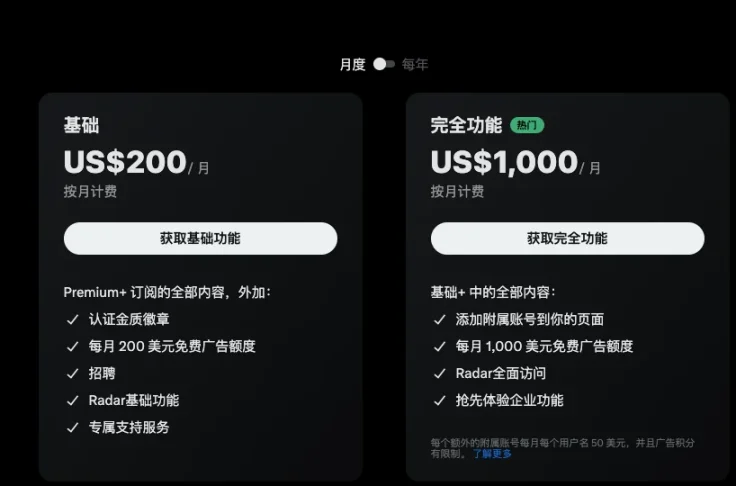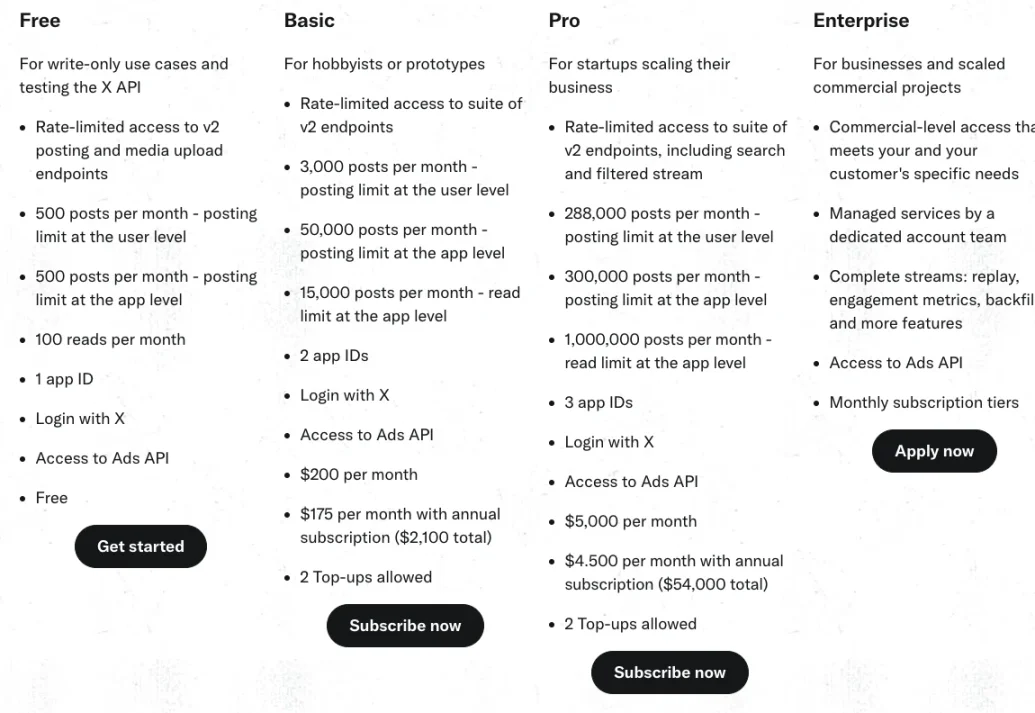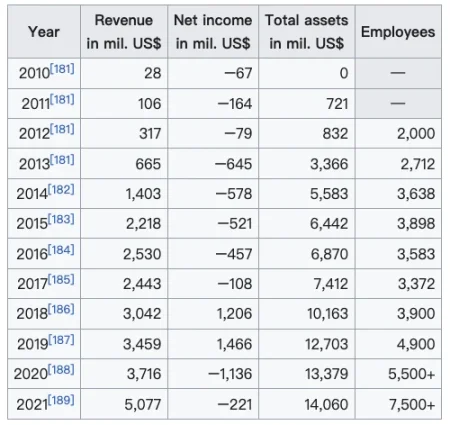ElizaOS is being extorted, Kaito pays $2 million every month… with no way out but to comply.
Written by: Golem, Odaily Planet Daily
Since June, the crypto projects have faced a wave of account bans on X, with some official project accounts and related personnel's accounts being frozen en masse without warning. This includes the official ElizaOS account and its founder Shaw's personal account, the GMGN official account and its founder haze's personal account, and the pumpfun official account and its founder Alon Cohen's personal account. Initially, the community speculated various motives behind X's account bans, including project exit scams, regulatory pressure, and associations with "Bubble Mart" meme images.

Bubble Mart
However, among the many speculations, a more plausible reason relates to the illegal use of third-party crawlers by crypto projects. Crypto KOL AB Kuai.Dong stated that a credible explanation for the account bans is that they targeted data scraping activities that did not go through the official API interface. He pointed out that if a company retrieves 200 million tweets per month through X's official interface, it would need to pay over $200,000. Many projects like gmgn, ai16z, and eliza, in an effort to save costs, opted to use third-party crawlers for data, leading to a collective ban.
On June 18, ElizaOS founder Shaw posted on the Farcaster platform accusing X of extorting him under the pretext of unblocking accounts. He stated that X cited his open-source code, claiming they violated certain service terms, including selling data and selling certain content by bypassing the API key. He mentioned that if Shaw was willing to pay $50,000 per month for an enterprise license, they would stop harassing him. However, Shaw is already paying $1,000 monthly for "yellow label" certification and $200 for developer licensing. Therefore, Shaw believes this is unreasonable and is considering whether to take legal action.

Shaw angrily criticizes Musk on the Farcaster platform
Following Shaw's revelations, the community speculated that the accounts of pumpfun and GMGN were unblocked either due to a compromise with X's "unblocking conditions" or that GMGN suspended its X monitoring and crawler tools after being unblocked, while Pumpfun removed its sniping/tracking features.
To get closer to the truth, Odaily Planet Daily sought confirmation from GMGN regarding the reasons for its ban and unban, but GMGN declined to make a public statement, saying, "We can't comment."
Is it a deliberate escape by crypto projects or X's greedy behavior?
Since Musk officially became the owner of Twitter (now renamed X) in October 2022, X canceled the free API and fully implemented a high-priced payment strategy in 2023. Since then, many companies have had disputes with X over hidden charges related to the API, forced upgrades to enterprise versions, and other issues. However, this time, crypto companies are being collectively targeted.
In October 2024, Ervin Kalemi, founder of the social media management platform Publer, publicly protested X's hidden charges on the X platform. He stated that Publer originally subscribed to X's enterprise-level API ($42,000/month), but starting November 1, 2024, X informed him that in addition to the original monthly fee, there would be an extra charge of "$1/month per connected account," meaning Publer would have to pay tens of thousands of dollars more each month.
In early 2025, users reported that X began cracking down on companies that used users' own API Keys (BYOK) to batch pull X data for clients, including commercial data integration/ETL service providers like Fivetran, Airbyte, and Stitch. The requirement was that they must upgrade to the most expensive enterprise API, and some companies have already received legal letters from X's legal department.
According to the pricing information released by X, upgrading an X account to the enterprise gold standard costs $200 per month for the basic version and $1,000 per month for the complete version.

Regarding API pricing, X's official structure is mainly divided into three levels. The basic version costs $200 per month, the professional version costs $5,000 per month, and custom pricing is required for enterprises and large-scale projects.

X platform API pricing standards
From the above pricing standards, it is evident that X may indeed have hidden charges and "extortion" practices against companies. The existing pricing standards do not clearly specify what scale and nature of enterprises need to apply for customization, and the pricing standards for custom enterprise versions are not publicly transparent. Is the API pricing for different companies merely at the whim of X, which holds a monopoly? For companies, X controls the life and death of platform accounts and can ban accounts at will. If a company does not agree to the pricing plan or delays negotiations, the ultimate victim is the company's interests. In such cases, most companies will choose to "obediently pay."
Financial Pressure Behind the X Platform
Using the power of account bans to threaten companies into paying may be a "dark strategy" Musk devised to save the X platform. Before Musk fully privatized Twitter, the platform had been in a state of financial loss for years. Since its IPO in 2013, Twitter only turned a profit in 2018 and 2019, while the rest of the fiscal years were in the red. In the last fiscal year before Twitter was privatized by Musk—2021—the loss still reached $221 million.

Twitter's profit and loss situation from 2010 to 2021, source: Wikipedia
Years of losses also led Musk to implement the X platform API charging model in March 2023. According to public data, paid APIs contributed approximately $900 million in revenue to the X platform in 2023, accounting for 26% of total revenue; advertising revenue remains X's main source of income, approximately $2.5 billion, accounting for 75%; the remaining revenue comes from XPremium subscriptions and enterprise gold standard certifications. Although API charging began in 2023, Reuters reported that due to a 50% drop in advertising revenue and heavy debt burdens, Twitter's cash flow remained negative in 2023.
Since Musk privatized Twitter in 2022, he has not publicly disclosed financial data, but we can still infer from third-party information that its financial situation in 2024 is not optimistic. In February 2025, Musk stated in an email to employees, "Our user growth has stagnated, and revenue is disappointing; we are barely maintaining a balance." The bulk of its expenses comes from the high debt costs accumulated during Musk's acquisition of Twitter. By the end of 2024, X will have paid over $1.3 billion just in annual interest expenses.
Therefore, under immense financial pressure, X has chosen to reach into the pockets of companies that rely on its API for revenue.
X Platform's Hegemony, Choking the Throat of Crypto Dissemination
However, facing financial pressure is not a valid reason for X to wield the power of account freezes to impose hegemony over companies.
X has users worldwide, and its information covers various aspects, including entertainment, politics, and business, making it a crucial channel for brand promotion and market updates for companies, especially crypto companies. According to a survey by CoinGecko, 41.7% of crypto users use X as their primary social media platform, followed by Telegram and YouTube, while 73.8% of crypto users choose to obtain crypto news through social media platforms.
Due to X's accumulation of a large number of crypto users and crypto social data, it has become a cornerstone of the crypto industry, just like public chains such as Ethereum. Therefore, about 90% of crypto companies and KOLs choose to publish brand promotion and product update information on the X platform. Many Web3 task platforms also choose X as their primary community interaction platform. If crypto is banned, it effectively cuts off the channels for crypto companies and KOLs to promote themselves externally.
On the other hand, the Meme, AI Agent, and InfoFi sectors that have emerged in the crypto industry in 2024 are highly dependent on the X platform. The vast majority of Meme gold dogs not only originated on X but also spread and fermented there, which is a primary reason why monitoring tools target X; most AI Agents' social training data comes from X, and Agents choose to be active on the X platform, such as AIXBT and Eliza; InfoFi platforms are also highly reliant on X, with "mouth strokes" and KOL ranking data sourced from the X platform. If X does not allow InfoFi platforms to use the official API, this sector may not exist, which is why Kaito is willing to pay $2 million monthly to X to maintain survival.
This deep dependency makes X not just a bridge but also a shackle of power, firmly constraining the pulse of the crypto world.
The crypto industry, which advocates for decentralization, is highly dependent on a centralized platform, akin to freedom fighters voluntarily putting on shackles—both shameful and reluctant. At such times, people often recall those once-hopeful decentralized social utopias, such as Farcaster and Lens. Although they understand the needs of crypto and financialization, they unfortunately do not grasp social interaction and product development, making it difficult to illuminate the main channel of crypto social interaction.
This morning, I found that ElizaOS founder Shaw has deleted his post accusing X on the Farcaster platform. Does this mean Shaw has leaned towards "submitting" to X? If the crypto industry continues to hand over information sovereignty to X, its hegemony may impose sanctions at any time. When crypto companies become targets again, they can only swallow their grievances—"we can't comment."
免责声明:本文章仅代表作者个人观点,不代表本平台的立场和观点。本文章仅供信息分享,不构成对任何人的任何投资建议。用户与作者之间的任何争议,与本平台无关。如网页中刊载的文章或图片涉及侵权,请提供相关的权利证明和身份证明发送邮件到support@aicoin.com,本平台相关工作人员将会进行核查。




